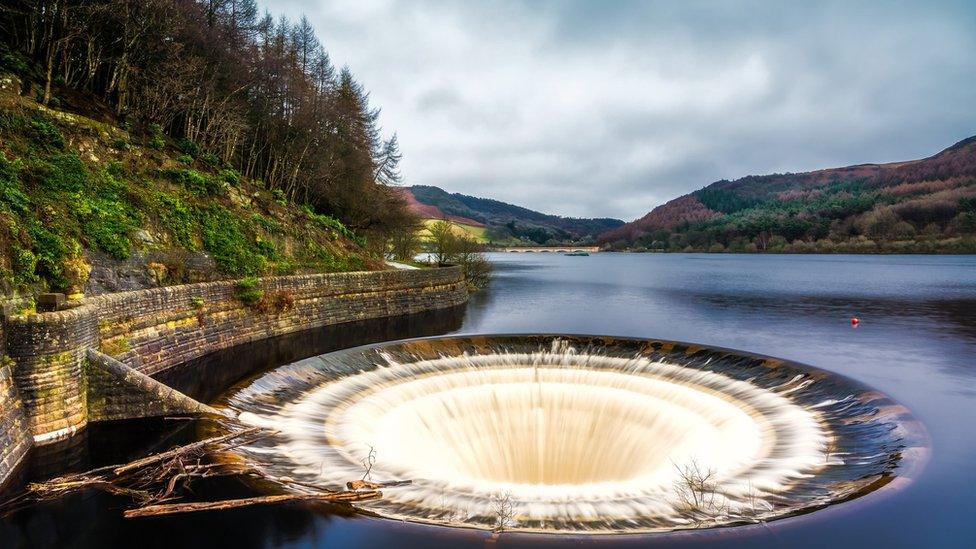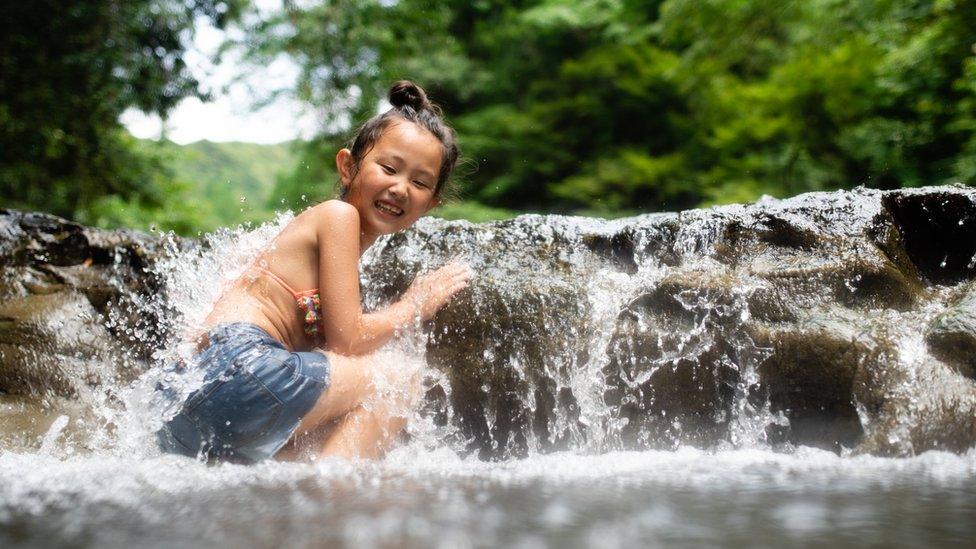Why you shouldn't go swimming in reservoirs!
- Published
- comments

Is there anything better than a cool swim on a hot, sunny day?
As we take summer trips around the UK, we may be finding ourselves swimming in one of the UK's many lovely beaches (we are an island after all) or even lakes and rivers.
And while open water swimming can be a lot of fun - there are some dangers of swimming in open water, particularly in bodies of water called reservoirs, that we should be aware of.
So we wanted to explain a little bit about how to make swimming in the UK's great outdoors safe as well as fun.

What is open water swimming?
Open water swimming is pretty much what you think it might be - it's swimming in open spaces like the sea, canals, rivers and lakes.
There are lots of people who prefer open water swimming to swimming in a pool, partly because they feel closer to nature and the sea tends to be a little bit larger than your local lido.
Open water swimming can be a lot of fun and more exciting than a dip in a pool, but there are some key safety tips to be aware of.

Be careful in places with fast currents - they can be stronger than they seem
Why is open water swimming different to swimming in a pool?
There are a few obvious differences that we're sure you've guessed already.
Temperature
Lakes, rivers and the sea do not have the temperature control of an indoor swimming pool. That means they can be very, VERY cold - even on a blisteringly hot day!
Cold water is fine to a limit, but it becomes dangerous if it falls below 15 degrees Celsius. People who are not used to cold water might find themselves at risk of experiencing cold shock.
In very cold water, your muscles may become numb and the temperature could take your breath away.
Many open water swimmers choose to wear a wetsuit - a full body swimming costume - to help protect them from colder water.
Size and strength
Open water tends to be a lot bigger than a pool, and, if it has a current, a lot stronger too!
Those wave machines you might have experienced at water parks won't match the speed or strength of a fast flowing river or tide.
A strong current can drain your energy very quickly, so make sure you get an adult to let you know whether they think the water is moving too fast for you to swim.
Open water can also be unexpectedly deep - so only go as far out into open water as you feel comfortable with as there might not be a place to stand and rest.
Safety measures
In a pool you will often have a lifeguard close by or an adult you can rely on in a smaller space.
Open water does not automatically give you the same level of support.
When swimming in open water it is very important that you never swim by yourself and you make sure there is a life guard or a confident adult swimmer present who can help you if you got stuck.
Also be prepared for what you might find in open water - the bottom may not be smooth, with weeds that can catch your feet or stones and sharp rocks.
The water will also not be cleaned in the same way that a pool is, and there is the risk of catching an infection if the water is not particularly clean.
If this all sounds a bit doom and gloom to you, buckle up because we need to tell you another thing...
Can you swim in a reservoir?
Why is it dangerous to swim in a reservoir?
Lakes and reservoirs might look very similar, but they actually have quite different origins.
A lake can be natural or man made, and is usually a big body of water that supports local animal and plant life.
A reservoir looks very similar, but is nearly always man made.
It is a place to store very large quantities of water for many reasons - for flood control, to act as a water supply or as a source of hydroelectricity.
Reservoirs are very dangerous places to swim and the government advises against people taking a dip in a reservoir. Here's why:
They tend to have very steep sides which makes them incredibly hard to get out of
They can be very deep, with hidden machinery that can cause injuries
The surface can look calm but the current might be strong below due to pumps used to move water around
They tend to be isolated - meaning that they might be far away from emergency services if things go wrong
The temperature tends to be very low, below 10 degrees Celsius, even on a hot day
Sadly, some people do not know about the risks of swimming in reservoirs - and there have been serious accidents that have happened at UK reservoirs in the last few years.
So reservoirs should always be avoided if you want to take a dip in open water.

If you take the time to research the right place to go outdoor swimming it can be a lot of fun
How do I swim in open water safely?
Open water swimming can be lots of fun - but you do need to make sure you're being safe.
The Royal Life Saving Society recommends the following tips if you are planning on swimming in open water:
SIGNS: Are there signs telling you how deep the water is, or whether it is unsafe to swim?
STAY CLOSE: Swim along the shore and not away from it, so you can easily get out if you get stuck
AVOID FAST WATER: Keep away from fast flowing water and be wary of any underwater hazards
TEMPERATURE: Get out of the water as soon as you start to feel cold
HELP: Only go in the water if you know there will be people that can help you if you get stuck
EQUIPMENT: Always wear a buoyancy aid like arm bands, or you can wear lifejacket for activities on the water like surfing or kayaking - goggles might help you see more easily underwater too
If in doubt about whether you could or should swim somewhere, it's always good to research where you plan on swimming before you go.
There are over one hundred open water areas in the UK that are lifeguard monitored and safety checked, and you can find more information about these places online.
